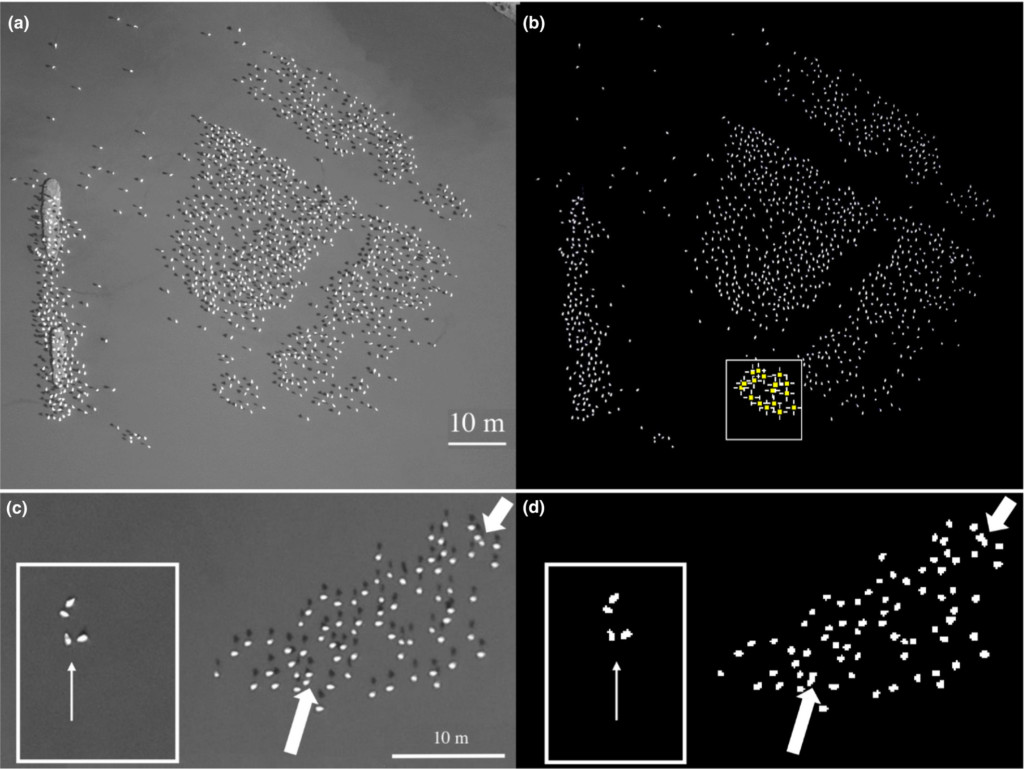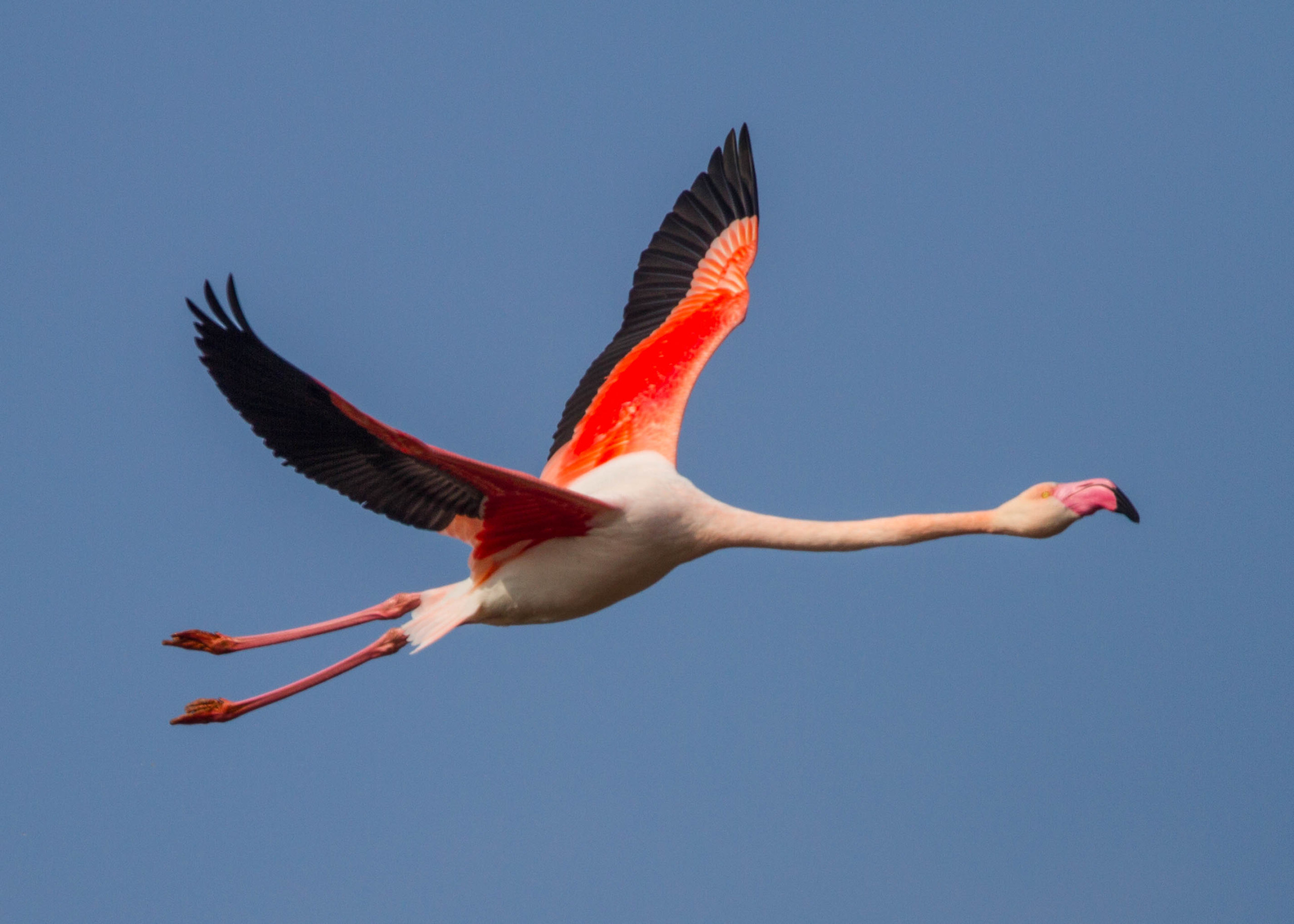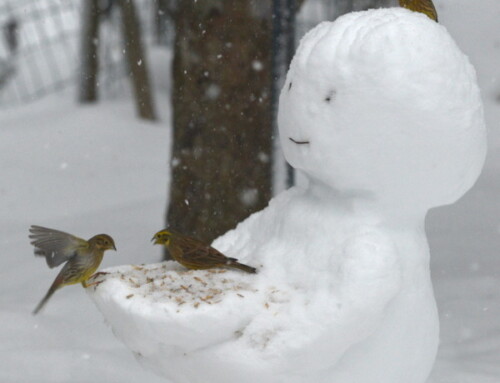 LINKED PAPER
LINKED PAPER
Rapid drone semi-automated counts of wintering Greater Flamingos (Phoenicopterus roseus) as a tool for amateur researchers. Valle, R. G. 2021. IBIS. DOI: 10.1111/ibi.12993. VIEW
Volunteers have been crucial in the development of ornithological research (Mayfield 1979). The data collected by citizen scientists can be extremely useful in answering fundamental ecological questions as well as informing conservation efforts (Silvertown 2009). However, the collection of citizen science data is often very time-consuming and labour-intensive (e.g., counting waterbirds). Moreover, the rapid development of new technologies, such as drones and camera traps, renders certain activities unfeasible for non-experts. It is thus important to devise user-friendly methods which ensure the involvement of the general public in particular research projects.
Drone-derived pictures
Recently, Roberto Valle – an independent researcher from Italy – investigated the feasibility of a semi-automated protocol to analyse drone pictures of Greater Flamingo (Phoenicopterus roseus) flocks. Because manually checking this footage can be time-consuming, Valle used several image-processing options in the freely available software ImageJ. To assess the reliability and accuracy of this approach, he compared the results with counts conducted according to standard field techniques with binoculars and telescopes. The analyses revealed that the drone counts were more precise and accurate compared to the ground counts (Hodgson et al. 2018). Moreover, the semi-automated method was significantly faster than the classical fieldwork approach.

Figure 1. Screenshots of the software ImageJ, showing digital images of Greater Flamingo flocks.
Limitations
Despite the clear benefits of using drones in counting flamingo flocks, we should not get too excited yet. There are some important limitations to consider. First, the current study only sampled small-to-medium sized groups. The processing of larger flocks might take more time and effort (Chabot & Francis 2016). Second, only flamingos were counted. It remains to be tested how this protocol works on mixed species flocks with similar bird species (Lyons et al. 2019). Discriminating between a Greater Flamingo and a Mute Swan (Cygnus olor) on a drone picture might be more challenging. And finally, drone flights are not permitted everywhere. In some regions, this method might not be an option. In summary, the use of drones for monitoring waterbirds is certainly a promising technology but more research is needed before this approach can really take off.
References
Chabot, D. & Francis, C.M. (2016). Computer-automated bird detection and counts in high-resolution aerial images: a review. Journal of Field Ornithology 87: 343– 359. VIEW
Hodgson, J.C., Mott, R., Baylis, S.M., Pham, T.T., Wotherspoon, S., Kilpatrick, A.D., Segaran, R.R., Reid, I., Terauds, A. & Koh, L.P. (2018). Drones count wildlife more accurately and precisely than humans. Methods in Ecology and Evolution 9: 1– 8. VIEW
Lyons, M.B., Brandis, K.J., Murray, N.J., Whilshire, J.H., McCann, J.A., Kingsford, R.T. & Callaghan, C.T. (2019). Monitoring large and complex wildlife aggregations with drones. Methods in Ecology and Evolution 10: 1024– 1035. VIEW
Mayfield, H.F. (1979). The amateur in ornithology. The Auk 96: 168– 171. VIEW
Silvertown, J. (2009). A new dawn for citizen science. Trends in Ecology & Evolution 24: 467– 471. VIEW
Image credits
Top right: Greater Flamingo (Phoenicopterus roseus) | Ron Knight | CC BY-SA 2.0 Wikimedia Commons
Blog posts express the views of the individual author(s) and not those of the BOU.
If you want to write about your research in #theBOUblog, then please see here




